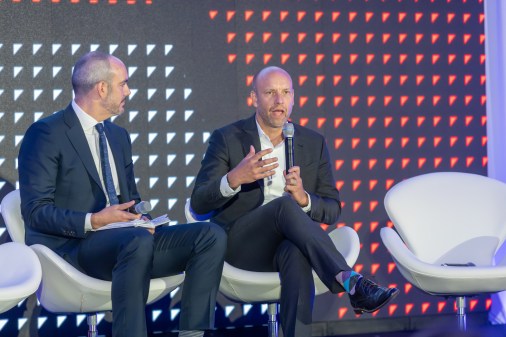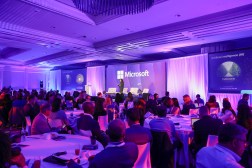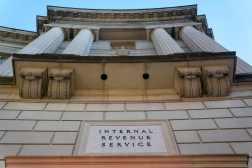More cash for new IT in 2017 federal budget plan

President Barack Obama’s fiscal year 2017 federal budget includes a proposed 9 percent hike in spending on new IT compared with last year’s, signaling a stronger push away from the maintenance of outdated and insecure legacy technology.
The Office of Management and Budget has designated 71 percent of the $51 billion requested for civilian IT funding in fiscal 2017 to the operations and maintenance of legacy systems, according to a breakdown of its total $89 billion IT request. The remaining 29 percent, OMB has proposed, would go to so-called DME spending — the development, modernization and enhancement of IT systems.
That would be a steep drop on legacy spending from prior years when federal officials, including U.S. Chief Information Officer Tony Scott, complained that as much as 80 percent of the civilian IT budget went to just keeping outdated systems running. Since 2010, federal operations and maintenance IT spend has continued to increase, while total annual cash for DME fell by $7.8 billion, the Government Accountability Office reported last year.
This increased push for more modern systems supports the administration’s efforts for improved information security — the proposed budget also requests a 35 percent increase in cybersecurity spending for fiscal 2017 to $19 billion through the new Cybersecurity National Action Plan.
“Improving Federal cybersecurity will require an accelerated push to strengthen the Government’s highest value IT and information assets and to retire, replace, or upgrade hard-to-defend legacy IT,” the breakdown of proposed IT spending says. “This will require not just modernizing hardware and software, but also improving how we manage the lifecycle of IT investments so that security gains can be sustained over time.”
“Over the last year, I have directly observed the need to modernize our information systems across the federal government,” Scott said Monday. “We have a broad surface area of old, outdated technology that’s hard to secure, expensive to operate and on top of all of that, the skill sets needed to maintain those systems are disappearing rather rapidly.”

Between fiscal years 2010 and 2015, federal civilian spending on IT O&M continually increased. (GAO)
Part of that proposed boost to cybersecurity would be funneled into the administration’s modernization campaign, under the budget plan.
OMB pledged $3.1 billion of that fiscal 2017 cyber spending to an Information Technology Modernization Fund, or ITMF, which would be housed in the General Services Administration, “to retire, replace or upgrade hard-to-secure legacy IT systems and transition to new, more secure, efficient, modern IT systems, while also establishing long-term mechanisms for Federal agencies to regularly refresh their networks and systems based on up-to-date technologies and best practices.”
The $3.1 billion is a seed investment of what would become a self-sustaining revolving fund to “address an estimated $12 billion worth of modernization projects over 10 years,” according to the breakdown. Though, David Haun, a former OMB deputy associate director and now director in Grant Thornton’s public sector practice, said questions remain as to the initial source of the investment.
“It’s not clear where these funds will come from,” he said. Haun added his discussions with agency officials suggested as much as $100 million would come from appropriations and the balance would be mandatory spending, required by law, to jump start the fund.
David Wennergren, a former Defense Department CIO and now executive vice present at the Professional Services Council, said he’s “glad to see this focus on IT modernization.”
“The fact that 80 percent or more of agency spending was going to maintain an ever-aging legacy base is just a tragedy,” he said. “No viable company would spend 80 percent of its [IT] resources on its legacy base as opposed to the IT that’s needed for the future. It doesn’t just slow down the [modernization] process; it directly affects cybersecurity.”
Purse strings
A review board of IT acquisition, cybersecurity and agile development experts would select agencies’ projects for funding from the ITMF based on risk profile, governmentwide impact and probability of success. The board’s objective would be to select projects that might be able to replace multiple legacy systems — especially those used in several agencies — with a smaller number of common platforms or systems. Agencies would repay the investment from the fund through the efficiencies gained.
According to GSA Administrator Denise Turner Roth, her agency is working closely with OMB to identify the type of IT experts who would sit on that board, but she did not say who would ultimately choose the membership.
Scott said Tuesday in a conference call that the modernization fund is meant to help agencies escape the rut of focusing primarily on maintaining antiquated IT instead of modernizing. It would also encourage agencies to use governmentwide shared services instead of building their own systems from scratch.
“The way federal budgeting for IT is done, the easiest money to get is money to keep old stuff running. The hardest money to get is to go fund new infrastructure replacement and new applications.” By embracing more modern, provisioned technologies like the cloud, Scott said, “we can take advantage of that in certain ways to build new applications” and get a bigger return on investment, feeding savings back into the fund.
“As agencies adopt these more modern technologies and more cost-effective ways of doing things, they’ll be able to afford to pay back into the fund, which then can go serve as the base for the next set of projects,” he said.
“I think it’s a win-win all the way around for both agencies, [and] the federal government as a whole.”
Wyatt Kash contributed to this report.
Contact the reporter on this story via email at billy.mitchell@fedscoop.com, or follow him on Twitter @billymitchell89.






